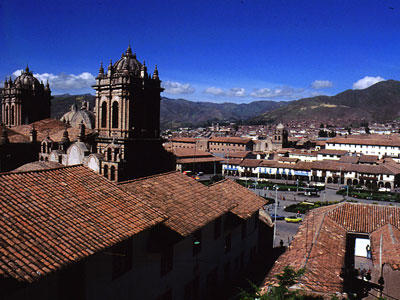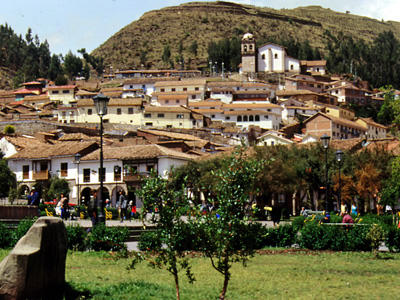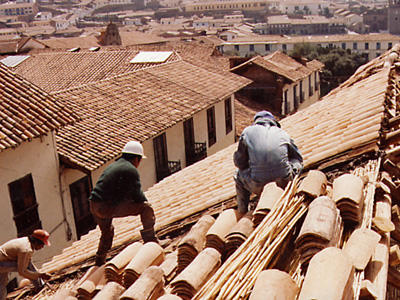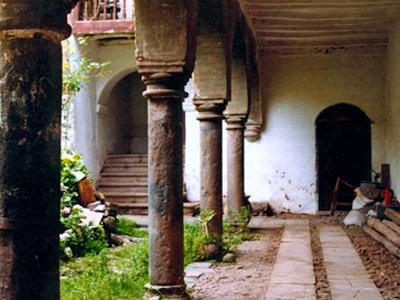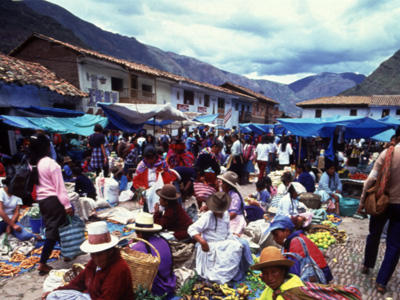Site History and Significance
A Planned City
In a fertile valley in southeastern Peru, at an elevation of 3,400 meters (11,150 feet), the Incas established the important settlement of Cusco in the twelfth century. Cusco was expanded and redesigned as a planned city in the early fifteenth century after Prince Cusi Yupanqui, later known as Pachacutec, successfully led the Incas against two attacks from the Chancas.
As the city developed, so too did the Inca Empire, and from 1438 to 1532 the Inca established themselves as the center of the most sophisticated city-state system in the pre-Colombian world through battles and diplomacy. Cusco was the capital of the largest empire in the New World until 1532, when it fell to the Spanish conquistador Francisco Pizarro.
Our Involvement
A Site Recognized Three Times by the World Monuments Watch
During the following centuries, the Spanish transformed Cusco into a new metropolis that combined baroque and Andean traditions and, by the eighteenth century, had become the second largest city in South America. In 1980, its historic center was placed on the UNESCO World Heritage List.
However, urbanization and tourism threatened the city's historic center and it fell into a state of rapid decline. Extreme vehicular traffic created chaos, air and noise pollution, and deterioration of the area’s infrastructure and heritage. The historic center also became over-populated and marked by socioeconomic inequality, with a significant portion of the city experiencing unsanitary living conditions, overcrowding, high levels of poverty, and buildings in disrepair. In addition, these issues were exacerbated by a government unwilling to dedicate funds to preserve the city's historic value. The site was included on the World Monuments Watch in 1996, 2000, and 2002 to bring attention to the site and to highlight the need for plans to stop its physical and social deterioration.
The Rehabilitation of City Blocks Presents an Example for the Future
In 1997 World Monuments Fund (WMF) secured funds from American Express to support the development of a conservation and urban rehabilitation plan for 12 of the 108 city blocks in Cusco's historic center. These blocks, all containing historic structures, were selected based on development pressure, historical significance, and socioeconomic makeup, in order to fully represent the Cusco’s historic district. The plan, which was completed in 1998, resulted in the creation of a database documenting the 12 representative blocks and the development of concrete guidelines to be applied to both residential blocks and public spaces. It also led to the selection of a full city block for development as a pilot demonstration project with financial support of from the local municipality and Spanish and Italian international cooperation agencies.
Protecting Cusco's Architectural History
With increased international attention garnered from Cusco's inclusion on the Watch, the city's crucial conservation and planning needs have since been addressed in ways that complimented the project World Monuments Fund supported. Laws regulating the city's historic architecture have been passed, new heritage institutions have formed, and physical conservation interventions have been carried out. One example of such an undertaking is the restoration of Cusco's cathedral, which took place between 1997 and 2002 and included the repair of the drains in the crypt, the strengthening of the retaining walls, and the renovation of the choir.
More than four centuries after the establishment of the historic center of Cusco, the planned streets and massive foundation stones that once supported Inca buildings can still be appreciated. Our project addressed the need to balance the city's modern realities, including its expanding population and growing tourism, with its rich cultural heritage.
Learn More
World Monuments Fund safeguards cultural heritage around the globe, ensuring our treasured places are preserved for present and future generations.
Sign up for our newsletter to receive regular updates on our projects, stories from the field, upcoming events, and more!
![]()

